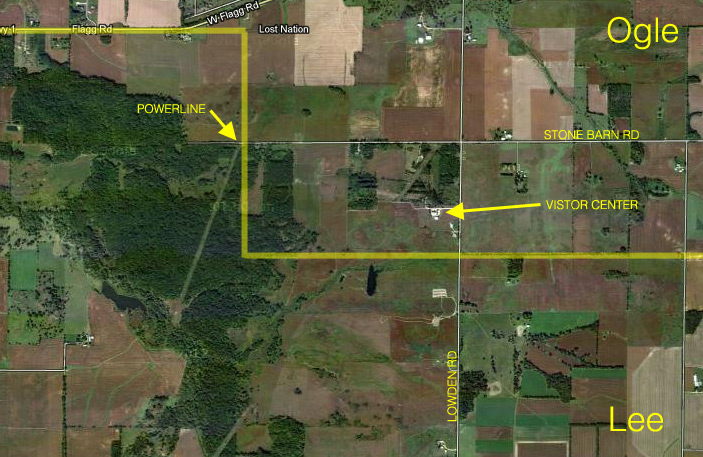Nachusa Grassland is a huge area of high-quality sand-hill prairie with many desirable breeding and wintering species. Grasshopper Sparrow, Henslow’s Sparrow, Savanna Sparrow, Vesper Sparrow, Sedge Wren, Bobolink, Horned Lark are all easily found breeding species. Look and listen for Lark Sparrows along the sandy two-track that goes west from the visitor center. Other sandy-scrub loving species such as Orchard Oriole, Bell’s Vireo, White-eyed Vireo, Blue Grosbeak and Yellow-breasted Chat can be found along this and other trails with appropriate habitat. Look for Willow Flycatcher in the wet areas.
The woods at the west end of Stone Barn Road have had breeding Hooded Warbler. During migrations, the edges along Stone Barn can be excellent for migrating sparrows, which have included Harris’, Le Conte’s and Eurasian Tree. Wintering raptors include Short-eared Owl, Rough-legged Hawk and Northern Harrier. Golden Eagle and Prairie Falcon have been seen in the area regularly during winter, often located by driving the roads to the north and east of the visitor center. Wild Turkey and Ring-necked Pheasant can usually be found along the back-roads in winter, and pheasant can usually be heard almost anywhere during spring and summer.
View Illinois Birding Map in a larger map
County listers take note that the Lee/Ogle county line runs through the northern third of the property:
